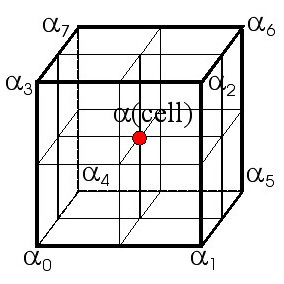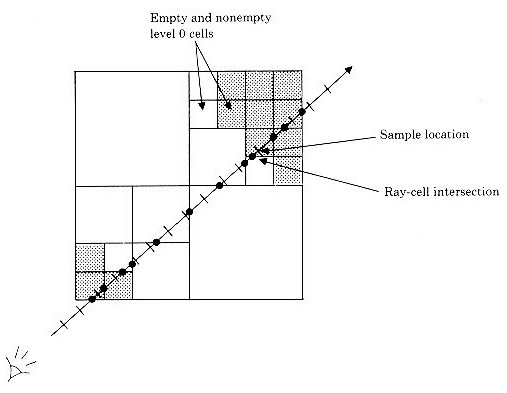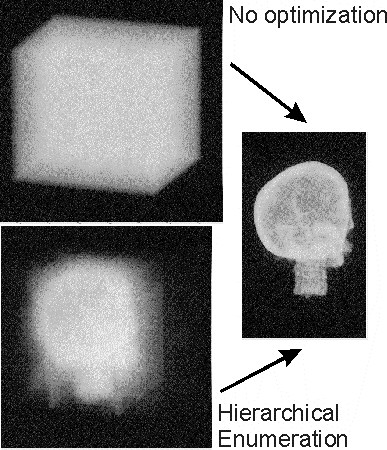
The Hierarchical Enumeration ([6]) bases on the fact, that normally a high percentage of volume data is empty. Therefore as large as possible empty regions are grouped together and ignored during rendering. A region is empty if it contains only voxels with a opacity of 0. A binary volume pyramid is used for this, where a node contains a 0, if the represented section is empty, else 1. The pyramid is constructed by replacing 8 voxels by 1 voxel. This new voxel gets the value 1, if the value of one of the replaced voxels is not equal 0, which means the subvolume is not empty, otherwise 0. For the construction of the base level is the opacity from the original volume data used.

This algorithm is used for raycasting. For rendering you calculate the
first intersection between the volume and the ray. Since the higher level
of the binary pyramid normally contains many or only a 1 it is more efficient
to start the traversal some levels below the top level. The traversal starts
at the node in the starting level which is first intersected by the ray.
The value of a node is checked, if the node contains a zero, the node is
ignored and you move along the ray and check the next node on the same
level, which is intersected. If the last checked cell and the new cell
have different parents, we move up the pyramid to this parent and continue.
If a checked node contains a 1, we move down and continue. Every time we
find a node (cell) at the base level which is 1, this cell is used for
rendering, which means the portion of the ray within this cell is used
for resampling.


This approach is also used for a hybrid raytracer ([5]), which renders both polygon and volume data without converting one data type into another.